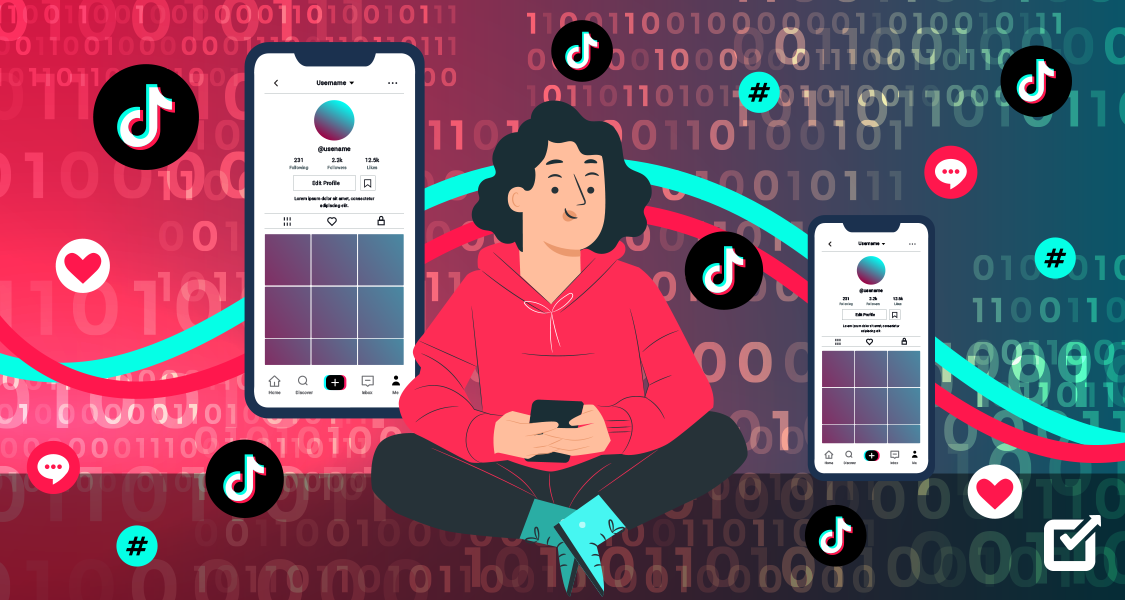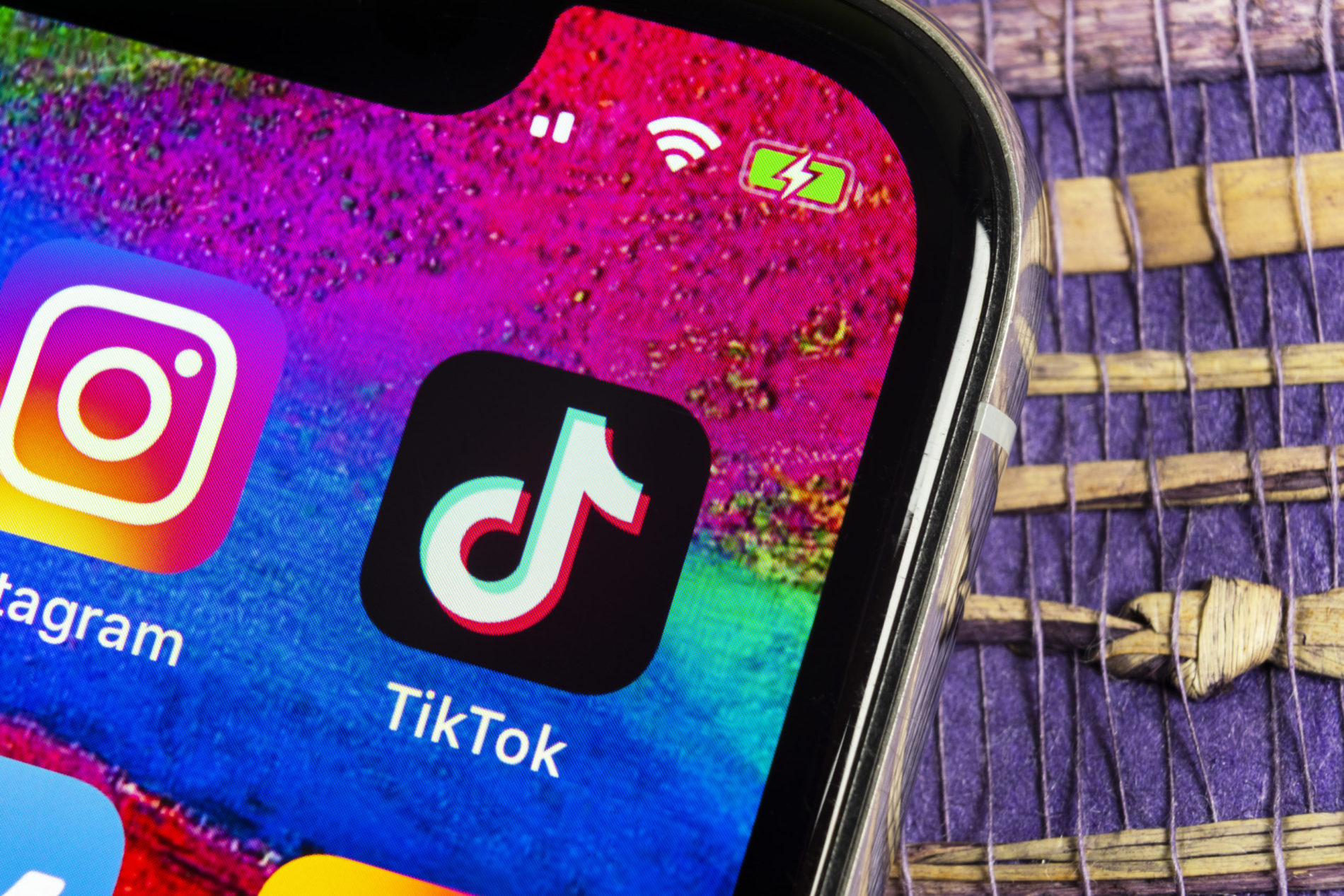TikTok has rapidly become one of the most popular
social media platforms in the world, with over 1 billion active users as of 2021. One of the key reasons for
TikTok's success is its powerful algorithm, which uses machine learning and artificial intelligence to deliver personalized content to each user based on their interests and behavior. However, the inner workings of TikTok's algorithm are still largely a mystery to many creators and marketers, who are eager to understand how their
videos are ranked and promoted on the platform.In this article, we will take a closer look at the behind-the-scenes workings of TikTok's algorithm and explore some of the factors that influence how
videos are ranked and recommended to users. We will examine the role of user behavior, content quality, and engagement metrics in the algorithm, as well as some of the specific strategies that creators can use to optimize their videos for maximum visibility and
engagement on
TikTok.By gaining a deeper understanding of how
TikTok's algorithm works,
creators and marketers can develop more effective
video marketing strategies and increase their success on the platform.
TikTok's algorithm is one of the key factors behind the app's massive success. The algorithm determines which videos users see on their "For You" page, which is the
app's main page where users can discover new content.Here's how TikTok's algorithm works:
User interactions
User interactions with videos can refer to various ways that users can engage with or affect videos, such as:
- Playback controls: Users can control the playback of videos using various controls such as play, pause, rewind, fast-forward, and volume.
- Comments: Users can leave comments on videos, expressing their thoughts, feedback, or questions related to the content.
- Likes and dislikes: Users can indicate their preference for a video by clicking on the thumbs up (like) or thumbs-down (dislike) button.
- Sharing: Users can share videos with others via various platforms such as social media, messaging apps, or email.
- Subscriptions: Users can subscribe to a channel or a creator, which means they will receive notifications when new videos are uploaded.
- Annotations: Creators can add annotations or interactive elements to their videos, such as links to other videos, polls, or quizzes.
- Ads: Users may encounter ads before, during, or after watching videos, which may require interaction such as clicking on a link or skipping the ad after a certain amount of time.
These are just some examples of how users can interact with videos.
Video platforms and creators may provide additional
ways for users to engage with or affect videos, such as live chat during video streams or interactive video experiences.
Sure, what would you like to know about video information? Video information can refer to various aspects of a video, such as:
- Video format: This refers to the type of file that the video is saved in, such as MP4, AVI, MOV, or WMV.
- Resolution: This is the number of pixels that make up the video image, typically expressed in terms of width and height (e.g., 1920 x 1080).
- Frame rate: This is the number of frames (individual images) that makeup one second of video. Standard frame rates include 24fps, 30fps, and 60fps.
- Bitrate: This refers to the amount of data being transferred per second during playback, typically measured in megabits per second (Mbps).
- Codec: This is the software used to compress and decompress video data. Common codecs include H.264, MPEG-4, and HEVC (H.265).
- Metadata: This includes information such as the video's title, description, tags, and other relevant data that can help users find and understand the content.
- Aspect ratio: This is the proportional relationship between the width and height of the video image. Common aspect ratios include 16:9 (widescreen) and 4:3 (standard).
These are just some of the aspects that can be considered when talking about video information.
Device and account settings
Device and account settings refer to the options and configurations that users can adjust on their devices and accounts to customize their video experience. Here are some examples:
- Playback quality: Users can adjust the playback quality of videos based on their device and internet connection, choosing between options such as auto, 240p, 360p, 480p, 720p, 1080p, or higher.
- Closed captioning: Users can enable closed captioning or subtitles for videos, which can be helpful for viewers who are deaf or hard of hearing, or who prefer to watch videos with subtitles.
- Notifications: Users can choose to receive notifications when new videos are uploaded or when creators they are subscribed to go live.
- Privacy settings: Users can adjust privacy settings for their own videos, choosing whether to make them public, unlisted, or private.
- Parental controls: Parents can set up parental controls to restrict access to certain types of videos or channels that may not be appropriate for children.
- Language preferences: Users can choose their preferred language for video content and subtitles.
- Account settings: Users can manage their account information, such as their username, password, email address, and profile picture.
These are just a few examples of the device and account settings that users can adjust to customize their video experience. Different
platforms may offer different settings and options depending on their
features and user preferences.
Popular trends in videos can refer to various styles or themes that are currently popular among creators and audiences. Here are some examples:
- Vlogs: Vlogs or video blogs, where creators film their daily lives and activities, have been a popular trend for many years, particularly on platforms such as YouTube.
- Challenges: Challenges, where creators complete a specific task or activity, often with a comedic or entertaining twist, have been a popular trend in recent years.
- Reaction videos: Reaction videos, where creators film themselves reacting to other videos, music, or events, have also become a popular trend on platforms such as YouTube.
- DIY and how-to videos: DIY (do-it-yourself) and how-to videos, where creators teach viewers how to make or do something, have been a popular trend for many years and continue to be popular on platforms such as YouTube and TikTok.
- ASMR: ASMR (autonomous sensory meridian response) videos, which feature creators whispering, tapping, or making other gentle sounds to induce a relaxing or tingling sensation in viewers, have become a popular trend in recent years.
- Gaming videos: Gaming videos, where creators film themselves playing video games and provide commentary or reactions, have been a popular trend for many years and continue to be popular on platforms such as Twitch and YouTube.
- Short-form videos: Short-form videos, particularly on platforms such as TikTok and Instagram Reels, have become a popular trend in recent years, featuring entertaining or comedic clips that are typically 15 seconds to 1 minute in length.
These are just a few examples of popular trends in videos. As technology and social media platforms evolve, new trends and styles may emerge, reflecting the changing interests and preferences of creators and audiences.
Video engagement
Video engagement refers to the various ways that viewers interact with and respond to videos. Here are some examples of
video engagement:
- Likes, dislikes, and comments: Viewers can express their opinion on a video by liking, disliking, or leaving a comment.
- Shares: Viewers can share videos they like with their friends or followers on social media or other platforms.
- Subscriptions: Viewers can subscribe to a channel to receive updates when new videos are released.
- Watch time: The amount of time that viewers spend watching a video is another form of engagement. The longer a viewer watches a video, the more engaged they are with the content.
- Click-through rates (CTR): CTR refers to the percentage of viewers who click on links or calls to action in a video, such as links to products or websites.
- View-through rate (VTR): VTR refers to the percentage of viewers who watch a video to completion or for a significant portion of its length. A higher VTR indicates that viewers are more engaged with the video.
- User-generated content: Some videos encourage viewers to create and submit their own content related to the video, such as fan art or reaction videos.
- Interactive elements: Videos can include interactive elements, such as annotations, polls, or quizzes, which encourage viewers to engage with the content in a more active way.
These are just a few examples of video engagement. Engaged viewers are more likely to share videos, subscribe to channels, and interact with creators, which can help to build a loyal fanbase and increase a video's reach and impact.
Video completion rate
Video completion rate (VCR) refers to the percentage of viewers who watch a video to completion or for a significant portion of its length. VCR is an important metric for measuring viewer engagement and can provide valuable insights into the effectiveness of a video in achieving its intended purpose.A high VCR indicates that viewers are engaged with the content and are interested in watching the entire video, while a low VCR may indicate that the content is not holding viewers' attention or is not relevant to their interests.VCR can be influenced by a variety of factors, including the length and pacing of the video, the quality of the content, and the overall engagement of the audience. Creators and marketers can use VCR data to refine their video content, identify areas for improvement, and optimize their videos for maximum viewer engagement.In addition to VCR, other metrics that can be used to measure viewer engagement include likes, shares, comments, and watch time. By analyzing these metrics together, creators and marketers can gain a more comprehensive understanding of how viewers are engaging with their content and how they can improve the effectiveness of their video marketing efforts.
Pros and Cons
Sure, here's a table outlining the pros and cons of TikTok:
| Pros | Cons |
|---|
| Personalized content recommendations | Potentially addictive nature of the app |
| Opportunity for creators to go viral | Privacy concerns and data collection |
| Diverse range of content | Questionable content and inappropriate behavior |
| Engaging and entertaining platform | Potential for cyberbullying and hate speech |
| User-friendly interface and features | Algorithm not fully transparent |
| International community of users | Limited editing options for videos |
FAQ:
What is TikTok's algorithm?TikTok's algorithm is a complex system that uses machine learning and artificial intelligence to analyze user behavior, content quality, and engagement metrics to deliver personalized content to each user based on their interests and behavior.
How does TikTok's algorithm rank videos?TikTok's algorithm ranks videos based on a variety of factors, including user behavior, content quality, engagement metrics, and specific signals such as captions, hashtags, and sounds.
What are some strategies for optimizing videos on TikTok?Some strategies for optimizing videos on TikTok include creating high-quality content, using popular sounds and hashtags, engaging with the audience through comments and challenges, and analyzing metrics to refine and improve content.
What are some of the challenges in understanding TikTok's algorithm?Some of the challenges in understanding TikTok's algorithm include its complexity, the constantly evolving nature of the platform, and the fact that TikTok may not reveal all the details of its algorithm.
How can understanding TikTok's algorithm help creators and marketers?Understanding TikTok's algorithm can help creators and marketers develop more effective video marketing strategies, increase their visibility and engagement on the platform, and ultimately grow their audience and achieve their marketing goals.
Conclusion:
In conclusion, TikTok's algorithm is a complex system that analyzes user behavior, content quality, and engagement metrics to deliver personalized content to each user. While the finer details of the algorithm may be kept under wraps, understanding how it works can help creators and marketers develop effective video marketing strategies, optimize their videos for maximum visibility and engagement, and ultimately achieve their marketing goals.By using strategies such as creating high-quality content, using popular sounds and hashtags, and engaging with the audience, creators can increase their chances of success on the platform. Overall, TikTok's algorithm plays a critical role in the success of the platform and understanding it is essential for anyone looking to make a mark on this popular social media platform.



 admin
admin








